Research topics at the Institute for Construction Materials
The institute works predominantly in the field of mineral construction materials. There are several focus areas.
One area is the investigation of the reactivity mechanisms and the potential of calcined clays as part of binders in normally and hydrothermally hardening mineral construction materials. Similar questions arise in the context of the investigation into alternative mineral binders.
A long lasting focus are the various types of lightweight concrete. Researchers at the institute work with all varieties of this highly interesting construction material: structural lightweight concrete, no-fines lightweight concrete and autoclaved aerated concrete.
Questions regarding the protective quality of mineral construction materials are in the focus of research projects dealing with the behavior of concrete and calcium silicate masonry units against impact.
Concrete construction is considered being a cracked way of building. Research at the institute focuses on the investigation of micro cracking in high strength concretes.
Exchanges make research vivid and provides inspirations for both sides. We call ourselves liky for having excellent research partners for ongoing an new projects.
Calcined clay
The Romans already appreciated them
Calcined clays are a very interesting group of pozzolans that are available worldwide. They are an efficient and promising alternative and supplement to conventional mineral binders. At the Institute for Construction Materials, large-scale calcined clays are investigated, which were produced from naturally occurring clay mixtures. Due to the low lime content in the raw clay, only little CO2 is released during calcination. Therefore, these calcined clays can be classified as sustainable and environmentally friendly.
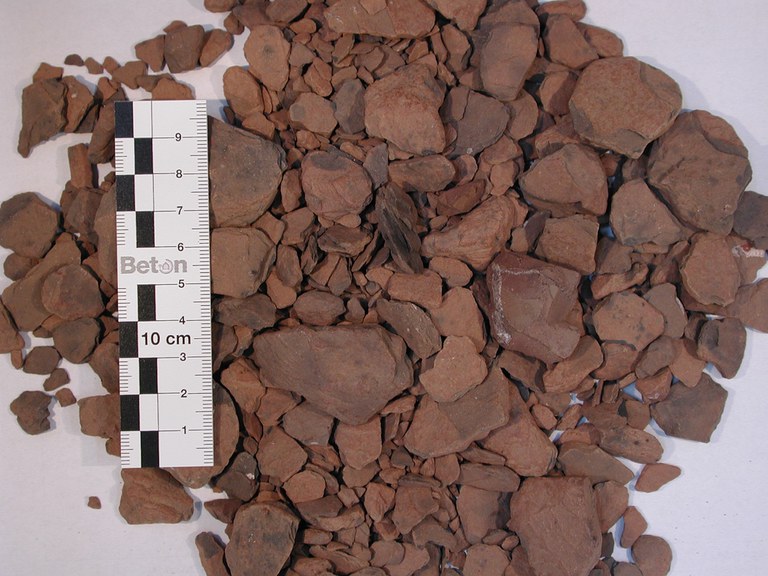
Figure: Calcined clay particles
Use in cementary systems
In cementary systems, calcined clay is used either as a main component of composite cements or as a supplementary cementitious material. Within the framework of various research projects, the following questions are being addressed:
- Influence of firing temperature on pozzolane reactivity
- Effectiveness in the cementary system and influence on cement hydration
- Influence on fresh and solid concrete properties and durability properties
- Possible applications for special concretes
- Interaction of structurally different superplasticizers with calcined clays
Use in hydrothermally hardening systems
Hydrothermal hardening in autoclaves is used for the production of calcium silicate masonry units and autoclaved aerated concrete. In both cases calcined clay can replace some of the usual mineral binders (lime, cement, gypsum). This measure improves the ecology. At the same time, the calcined clay has a positive effect on the resulting mineral phases and influences various mechanical properties and durability.
Within the framework of various research projects, the following questions are being addressed
- Use of calcined clays as a binder component to improve the CO2 balance calcium silicate masonry units
- Possibilities of a sulphate carrier and cement-free formulation to improve the recyclability, environmental compatibility and CO2 balance of autoclaved aerated concrete
Alternative binder materials
The demand for alternative supplementary cementitious materials is growing due to the increased share of renewable energies and the accompanied reduced availability and decreasing quality of common supplementary cementitious materials. The Institute for Construction Materials evaluates innovative secondary resources with respect to their reactivity in search of ecological efficient supplementary cementitious materials and investigates the impact of the materials in question upon concrete microstructure and resulting concrete properties.
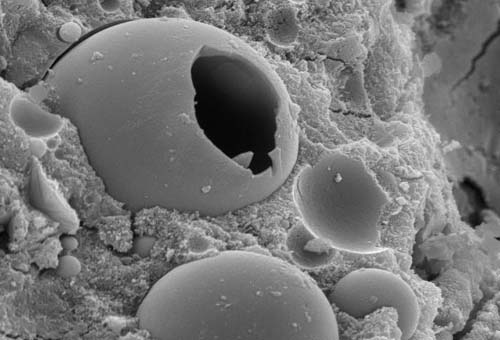
Figure: Scanning electron micrograph of a damaged fly ash sphere embedded in a concrete matrix
Lightweight concrete
Can it be a little less?
The term “lightweight concrete” holds for quite different types of concrete. Among them is structural lightweight concrete (LC) which has dry densities ranging from 800 to 2000 kg/m3. It covers strength classes from LC8/9 to LC80/88. The second type represent no-fines lightweight concretes (LAC). They have densities ranging from 400 to 2000 kg/m3 and strength classes from LAC 2 to LAC 25.
Infralightweight concrete (ILC) represents the transition from structurally dense to lightweight concrete as in-situ concrete. With a dry density clearly below 800 kg/m3, strength classes of LAC 2 to LAC 6 are achieved.
Autoclaved aerated concrete (AAC) represents the third type with dry densities ranging from 250 to 1000 kg/m3 and strength classes from AAC 1.5 to AAC 10. The latter type of lightweight concrete differs fundamentally from the two other with respect to the necessary autoclaving during its production and its microstructure.
The institute has experience and gained profound knowledge for decades in the fundamental research and application in the area of lightweight concrete and contributes to various standardization committees.
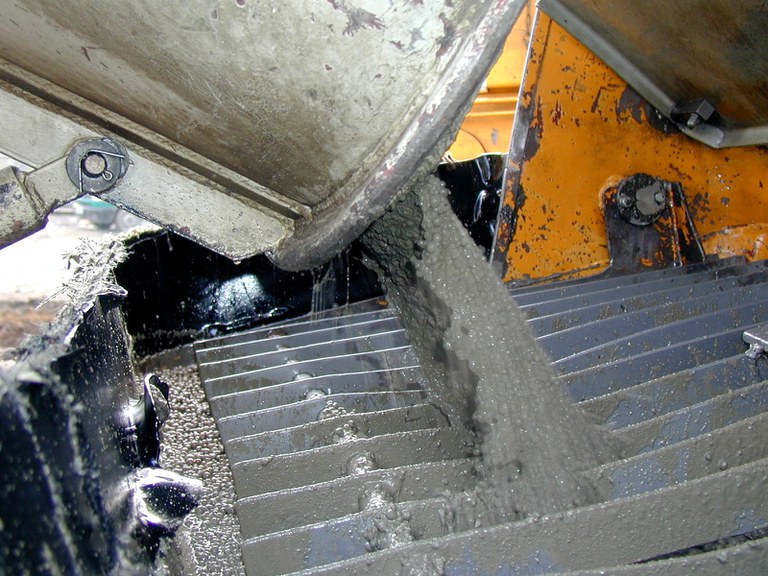
Figure: Charging structural lightweight concrete from a truck-mixer into the reservoir of a concrete pump
Structural lightweight concrete
In case of structural lightweight concrete the following research topics are dealt with:
- Evolution, assessment and improvement of extremely light structural lightweight concretes
- Optimizing self-compacting lightweight concrete
- Conversion factors between different lightweight concrete specimen geometries, sizes and storage conditions
- Conversion factors between drilled cores and laboratory lightweight concrete specimens
- Lightweight concrete in fair-faced concrete quality
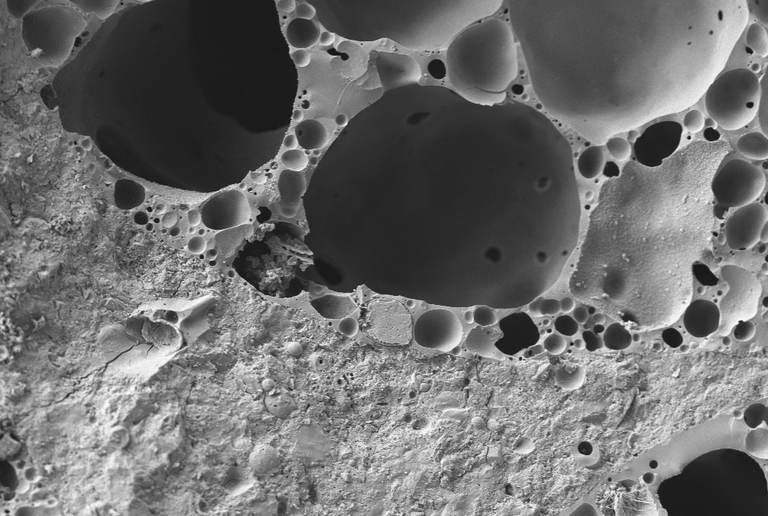
Figure: Interface zone between an expanded glass particle and the mortar matrix
No-fines lightweight concrete
Special research focus of the institue is on mechanical properties of no-fines lightweight concrete with significantly lower dry densities than the one common today.
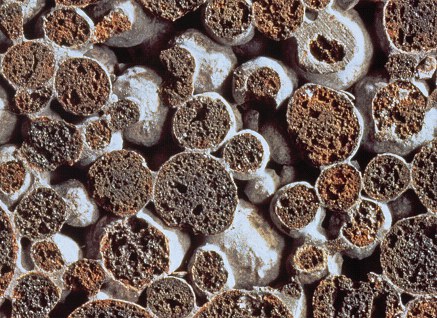
Figure: Structure of a no-fines lightweight concrete
Autoclaved aerated concrete
Research at the institute deals with the effect of calcined clays upon the rheological properties during the initial phase of the production of autoclaved aerated concrete, the modifications of the mineral phase composition and the resulting mechanical properties.
Impact behavior
Please with a shot
High dynamic loading of structural members made of concrete or masonry may result from explosions or are due to the impact of particles of projectiles. The resistance against the impact of particles or projectiles depends decisively upon the properties and composition of the construction material used for the structural members hit. The Institute for Construction Materials investigates together with the laboratory for ballistics, competence area “weapons technology and protective systems” in the department of Mechanical Engineering of UniBw M construction material properties impact starting with concrete as an initial example. The investigations form a basis for future modelling and contribute to optimization of concrete composition in order to be protective against ballistic impacts.
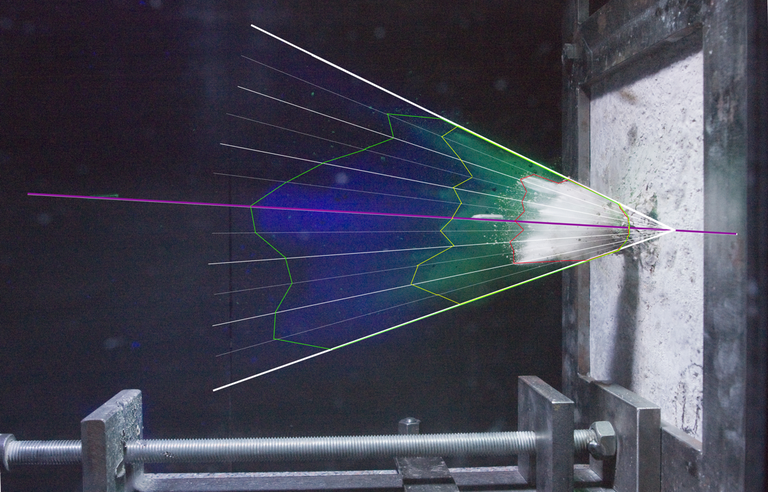
Figure: High speed photo of a projectile after penetrating a concrete element
Concrete specimens are fired at in the course of the tests conducted at the laboratory for ballistics. High-speed cameras document the tests and help determining the residual energy of the projectile. For analyzing the tests in detail a laser scanner measures all fracture surfaces and as a result the different portions of the energy can be determined. As a result of the project concrete technology parameters can be provided for numerical modelling which accomplished an optimal material selection for improved protection with concrete elements of while maintaining the dimensions.
The research results gained with the impact behavior of sand-lime bricks permits for the first time to produce purposefully sand-lime bricks with enhanced impact resistance on industrial scale.
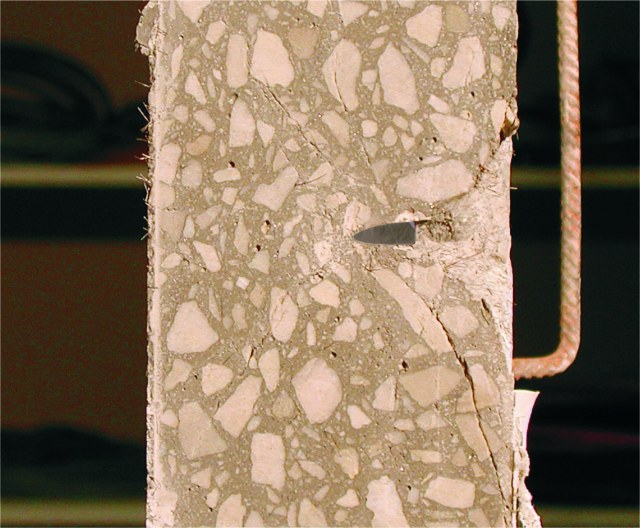
Figure: projectile stuck in high strength concrete
Formation of micro cracks
How ripped
Micro cracks are present even in mechanically unloaded concrete due to the deviating deformational behavior of the individual constituents. A method was developed at the Institute for Construction Materials to visualize micro cracks in concrete. High strength concrete specimens were selected in order to investigate the effects of specimen preparation, concrete composition as well as curing condition and applied load upon the formation of micro cracks. Autogenous shrinkage turned out to be the main impact for micro crack formation in high strength concrete. Starting point for micro cracks in the matrix are either air voids or the interfacial transition zone around the aggregates. There was no clear evidence of any impact of micro cracks on any mechanical or durability property of high strength concrete.
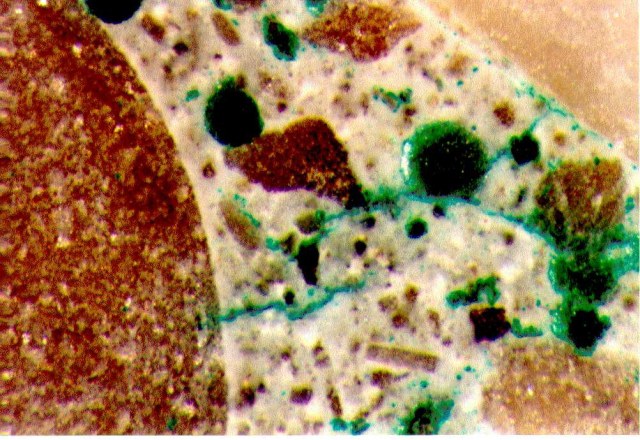
Figure: Colored micro crack running through a concrete matrix
Cooperations
One and one is often more than two
The Institute for Construction Materials cooperates closely on several research projects with partner institutes, other research institutions and research-based companies. Among the research partners are the following working groups:
- Prof. Irassar, Facultad de Ingeniería, Universidad Nacional del Centro de la Provincia de Buenos Aires, Argentinien
- Prof. Plank, Chair for Construction Chemistry, Department for Chemistry, Technical University Munich
- Prof. Höcherl, Laboratory for ballistics, competence area “weapons technology and protective systems”, Department of Mechanical Engineering, UniBw M
- Prof. Kustermann, Department of Civil Engineering, Construction Chemistry Laboratory, University of Applied Sciences Munich
- Dr.-Ing. Eden, Research Association Lime-Sand e.V. (registered association), Hannover